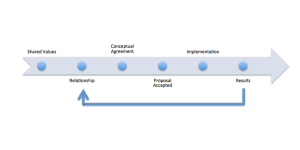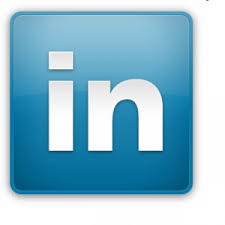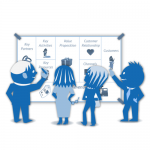How to Deliver Winning Proposals – Part 4
 Writing proposals is time consuming. Writing customised proposals is even more time consuming, but they are also much more effective. However, writing proposals that do not lead to business is obviously a waste of time. Time that could have been used for more productive purposes. It therefore makes sense to consider a few critical issues carefully before we hit the keyboard.
Writing proposals is time consuming. Writing customised proposals is even more time consuming, but they are also much more effective. However, writing proposals that do not lead to business is obviously a waste of time. Time that could have been used for more productive purposes. It therefore makes sense to consider a few critical issues carefully before we hit the keyboard.
Ask yourself the following questions:
- Can I accomplish this project successfully?
- Can I mitigate the risk?
- Does the project deliver an equitable margin (at least 10:1)?
- Will the successful accomplishment of this project lead to more business or is it a one off?
- Will this client serve as a reference and will this improve my market value?
If you can answer yes to all five questions while looking at yourself in the mirror, then it is time to move to the Proposal phase.
The Proposal
 I strongly recommend using the Alan Weiss approach to writing proposals.
I strongly recommend using the Alan Weiss approach to writing proposals.
The proposal summarizes what you have agreed with the client in the Conceptual Agreement phase.
What if you cannot get the client to participate in the Conceptual Agreement process?
Walk away.
It will be 99% likely that your proposal will not be accepted and you have wasted your precious time.
Given that you have defined the project KPI’s and that you have five yeses from your own self-assessment, the proposal writing can commence.
Writing Proposals
Writing winning proposals requires that you can write.
It may sound trivial and obvious, but be aware that a lot of talented people cannot write simple prose. Just as most people are scared to death by the prospect of having to address a large audience so are many people paralyzed when having to put words to paper.
If you suffer from “fear of writing” then you must overcome the fear and you must seek help in learning this particular skill. You will never become a top notch independent management consultant if your only medium of written expression is PowerPoint.
Learn to write short, clear and to the point proposals.
The structure of the winning proposal
The winning proposal has a very simple structure:
1. Situation Appraisal
2. Objectives
3. Metrics
4. Value
5. Methodology and options
6. Timing
7. Joint Accountabilities
8. Terms and Conditions
9. Acceptance
In the following posts I will explain what goes into each of the sections of the winning proposal.
Please note that the proposal is not about us. There is no bragging about our accomplishments or page after page detailing the history of our company.
We do not write proposals for potential clients that are not already convinced that we can do the job. The objective of the proposal is not to sell ourselves.
The objective is to confirm what we have agreed with the client in terms of scope, KPI’s, timing and approach.
 With the proliferation of platforms like LinkedIn and your own company web sites, the days of the corporate brochure and chapters of company propaganda in proposals are long gone.
With the proliferation of platforms like LinkedIn and your own company web sites, the days of the corporate brochure and chapters of company propaganda in proposals are long gone.
As independent management consultants we must be very careful in managing our presence on the web and on LinkedIn in particular.
Don’t expect this investment to generate tons of inbound leads, but consider it necessary as a reconfirmation of the messages you deliver as you engage with potential clients.
Get testimonials, write blog posts, write whitepapers and write books. Prove that you are the subject matter expert that you claim to be.
When it comes to writing winning proposals it should be all about the client and the project at hand. Information about you and your company belongs on LinkedIn and your website, not in the proposal.
Other posts in this series
How to Deliver Winning Proposals – Part 1
How to Deliver Winning Proposals – Part 2
How to Deliver Winning Proposals – Part 3
How to Deliver Winning Proposals – Part 5
How to Deliver Winning Proposals – Part 6
How to Deliver Winning Proposals – Part 7
How to Deliver Winning Proposals – Part 8
How to Deliver Winning Proposals – Part 9
How to Deliver Winning Proposals – Part 10
How to Deliver Winning Proposals – Part 11
How to Deliver Winning Proposals – Part 12








